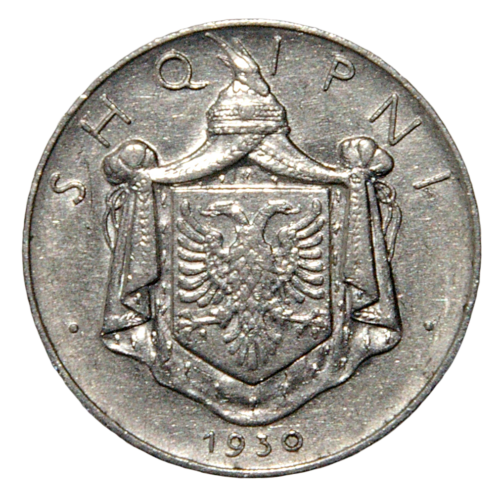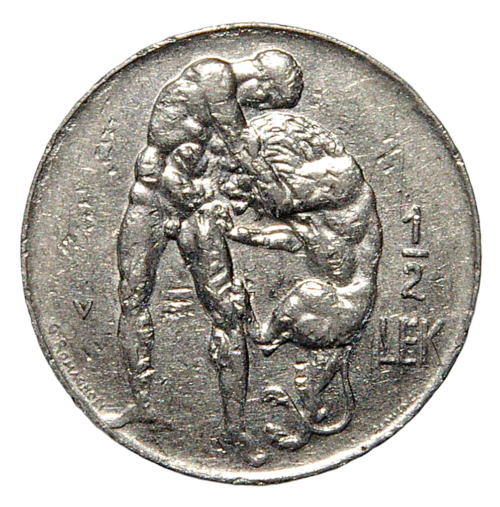W033 (Sim to W051)
Nickel, Fine
24 mm (15/16”), 9.33 grams
HISTORY: The lek was issued on February 16, 1926. It was Albania’s first currency as a republic. The word derives from a foreshortening of Alexander the Great (356—323 BC) whose Albanian name translates as Leka. The lek was minted in ¼, ½ and 1 qind denominations in nickel only. The Albanian word “qind” means one hundred, so 1 lek equals 100 cents. Albania produced their coins at three mints: Rome (R), Vienna (V) and London (L). This ½ lek design was minted in 1930 and 1931, with a total mintage of 500,000 for 1930. The lek was demonetized in 1940.
OBVERSE: The Albanian coat of arms is framed by open drapes. The double-headed eagle is from the crest of the House of Kastrioti, an Albanian ruling family from feudal times. Most famous among the family was Gjergj Kastrioti Skanderbeg (1405—1468), feudal lord and warrior. On July 12, 1926, the Albanian coat of arms was unveiled with the double-headed eagle and Skanderbeg’s helmet above. In this design, drapes hang from the helmet, surmounted with a horned goat’s head. “SHQIPNI” is the spelling of Albania. Below the drapery is the date “1930.”
REVERSE: Giuseppe Romagnoli (1872‒1966), designer and sculptor of this coin, chose a theme of Hercules wrestling the monster lion of Nemea whom no mortal could subdue. This was Hercules’s first labor of the 12 he had yet to endure. To the outside left of Hercules’s knees is the letter “V” and below, along the rim, is the signature “G. ROMAGNOLI.” Romagnoli was the designer of many Albanian coins (see also W006). Right of the lion is the lettering “1/2 LEK.” Beneath, along the rim, is the lettering “A. M. INC.”
EDGE: Smooth.


